For last year's Expired Film Day, I shot some large format photographs that I used for a piece that I made featuring a long roll of contact prints on transparency film for an exhibition. This year I wanted to do something different for the day: shoot a short film on expired film. I've recently been using a fifty-year old 8mm camera, the Canon Cine Zoom 512, and so it seemed fitting to attempt to shoot something with it today.
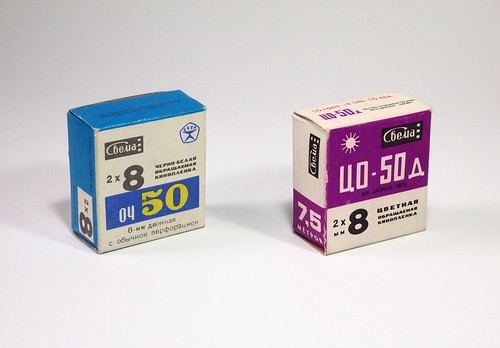 |
| Svema Och 50 black & white and CO-50D colour reversal films |
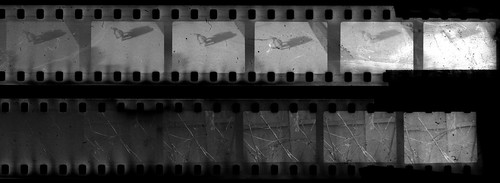 |
| Svema CO-50D (top) and Och 50 (bottom) exposure tests |
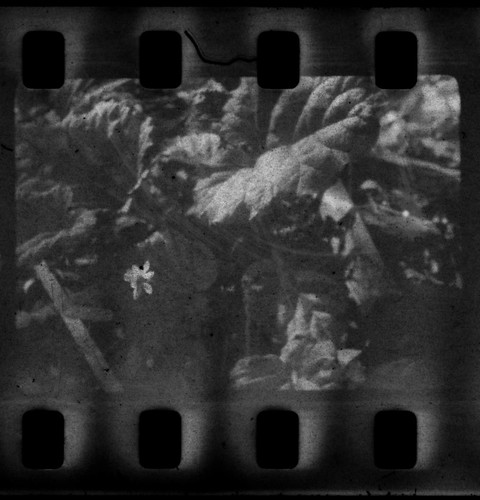 |
| Svema Och 50 shot with Mamiya-16 Automatic at 3EI |
The black and white film, Och 50 did not produce as good results as the colour film as it had seemingly lost more sensitivity with the passing of time; in addition, the CO-50D as a negative had a fairly uniform yellow cast, which, when removed in Photoshop, gave a better tonal range. Regardless, both films were fogged and showed typical degradation, and the small size of the negatives enhanced these qualities far more than a large format would.
Having tested both films, I cut two five-foot lengths from each, for the practical reason that this is as much film as I can develop in my universal tank at a time. To get as long a film as possible from a five foot length of film, I shot at a low rate of 8 frames a second, meaning that, at 80 frames a foot, I'd have about fifty seconds for each side of each length of film. As well as providing a longer running time, the lower frame rate also has a slower shutter speed, critical for ensuring the film had sufficient exposure. Normally double 8mm film would be daylight loaded, and the start and end of the reel would be exposed in loading, and this would be taken into account when shooting. I denied myself the luxury of doing this, so had to thread the film through the camera's film gate in the dark, and, given the way the film has to pass through the camera twice, reload the film in the dark too.For the content of the film, I wanted something which would reflect the nature of the double-8 format in a structural manner. From using the film previously, I was struck by the rotational symmetry of the unsplit, full width of the 16mm film, with two sets of frames running in different directions, but didn't feel it was appropriate to show the full width of the film in its final presentation. In addition, the end of one set of frames on one side of the film becomes the beginning of the second set of frames on the other side; I imagined that it might theoretically be possible to loop unsplit double 8 film in such a way that it might run through a 16mm projector, showing both sets of frames, one upside down and running in reverse, but at the join of the film into a loop, this would flip over and run the right way around and continuously do so. This notional film loop that could flip from backwards to forwards might take the form of a Möbius strip.
Moving from imaginary, theoretical loops to the film I made, I chose to shoot myself making a Möbius strip from a sheet of paper printed with a gradient from black to white, printed in different directions on each side, as a way of conveying the idea of one continuous surface: connected in a straight loop, the paper would have an abrupt transition from dark to light at the join, but twisted around, this join would be at the end of a gradient, dark on one side of the paper, light on the other, but continually shading from one to the other.
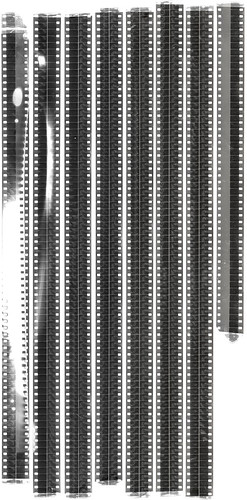 |
| Double 8 unfixed negative scan |
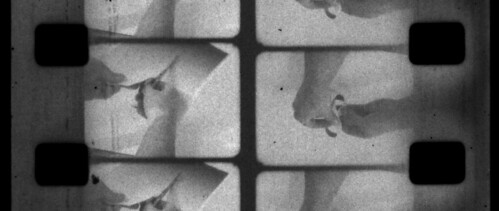
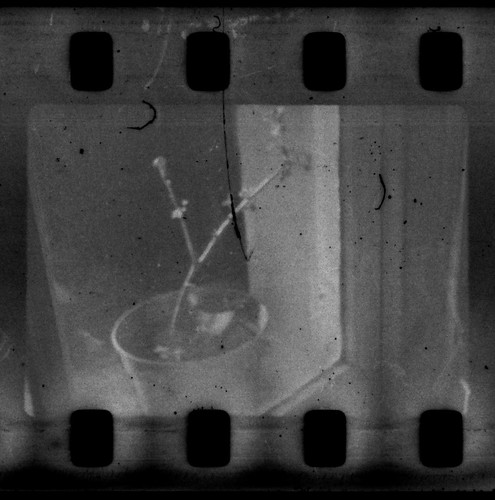
No comments:
Post a Comment